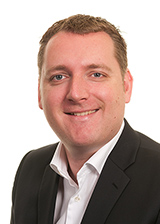From cars to calls – expanding the limits of simulation
 Sander / Oct 23, 2015
Sander / Oct 23, 2015
Every year SIMUL8 Corporation sponsors the Michigan Simulation User Group (MSUG) conference. This conference brings together professionals who work with simulation in order to promote its use as a decision support tool.
This year I presented with one of our customers at Ford Motor Company, Mr. Thomas Woods. Tom currently works as New Technology Planning Supervisor and relies heavily on simulation in his role.
Our presentation focused on a project that Tom and I worked on in his previous role (IT Service Desk Supervisor). In this role Tom looked after the contact centers that handle all IT service requests (generated through telephone calls, emails and online systems) for services like new software installations, changes to configurations and failures on business critical systems.
The contact centers handle hundreds of thousands of tickets per year. Each ticket is categorized and handled according to procedures designed to handle tickets in the most efficient way. Tickets can be handled in three different ways:
- The IT Service Desk team solves the ticket
- The IT Service Desk team triages the ticket and routes it to the appropriate second line team for resolution
- The IT Service Desk team catches and routes the ticket to a second line team
The challenge
As part of various continuous process improvement initiatives the idea was floated to change internal procedures that would bypass the IT service desk for tickets they only catch and dispatch. The team expected that this would reduce the load on the team, meaning they would be able to handle the remaining tickets more efficiently, increasing overall contact center performance. Tom quickly realized that normal analysis methodology wouldn’t provide the power and accuracy to calculate the true impact on the contact center’s performance. Instead he decided to use simulation to solve this complex business question.
Tom started the project by mapping all procedures to create a detailed understanding of the flow of all of the different ticket types. The next stage was to find the data to support his analysis. He found that this simulation would rely on huge amounts of data. The creation of new tickets depend on factors such as the time of the day, the location at which the ticket was created (the contact centers serve all locations worldwide) and type of ticket.
Similar complexity was found for ticket handling time: most tickets require several interactions with the customer and can be transferred to other teams. Also, different ticket types can have different service levels which may change the order in which tickets are handled. The result of the data gathering and analysis effort was a comprehensive understanding of the load on the contact center. The data gathered for simulation purposes proved so useful that it is now part of normal management reporting processes.
The result
After completion of the data analysis phase Tom and I worked on developing the model to handle all tickets according to their normal operating procedures. We also included detailed handling of the number of agents on shift per location for all working hours in a normal working week. The result was a compelling simulation that has found its ways through several layers of senior management within Ford.
More importantly, the simulation now offers a deep and accurate understanding of changes to operating procedures before these changes are implemented in the real system. The key question that Tom was looking to answer in this project has been answered by the model and the results show improvements across all major performance measures (some have increased by more than 6%) with a potential 1% saving in the required number of agents.
All in all, we feel very proud to have Tom presenting together with us and would like to thank him for his contribution to achieving MSUG’s mission. We would also like to thank everyone who attended our presentation. We understand that you are spoiled for choice when choosing between sessions and we really appreciate that many of you decided to join our session. Thank you!